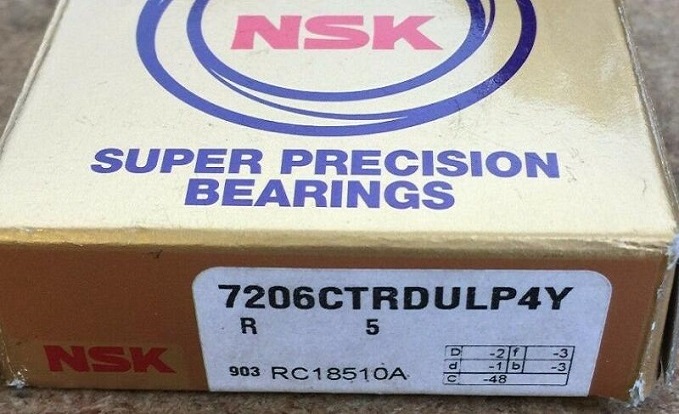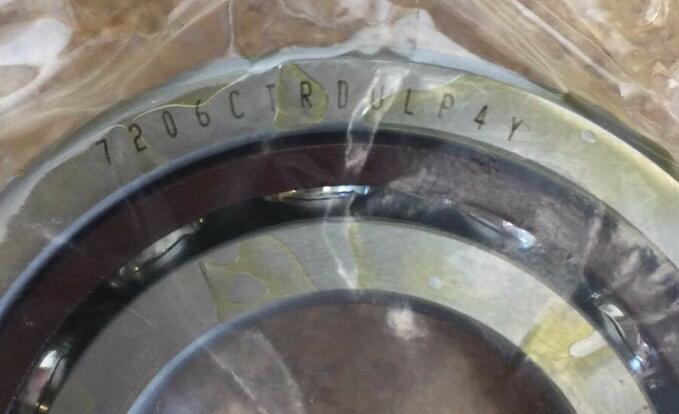Writer: Eric Bearing Limited
Although there are many types of NSK one-way bearings, their structural types, tolerance levels, material selection, and processing methods are different, but their basic manufacturing processes include the following:
1. Manufacture of NSK unidirectional bearing parts-Inspection of bearing parts-Demagnetization, cleaning and rust prevention of bearing parts-Bearing assembly-Inspection of NSK unidirectional bearing products-Demagnetization and cleaning of NSK unidirectional bearing products-Storage of bearing oiled packaging buckets .
2. The ring is an important part of the NSK unidirectional bearing. Due to the variety of NSK unidirectional bearings, the ring size, structure, manufacturing equipment and process methods of different types of NSK unidirectional bearings are different. And because of the many processing procedures of the ferrule, the complex technology and the high precision of the processing, the processing quality of the ferrule has an important impact on the accuracy, service life and performance of the NSK one-way bearing.
3. The raw material for the manufacture of ferrules is cylindrical bar material or tube material. At present, according to the different forming processes, NSK unidirectional bearing ferrules generally have the following manufacturing processes. ERIC BEARING LTD supply NSK super precision bearings , widely used in CNC spindle , NSK 7206CTRDULP4Y photos as below

(1) (Bar) blanking-forging-annealing (or normalizing-turning (cold roll forming)-heat treatment quenching, tempering-grinding-parts inspection-demagnetization, cleaning-submitting for assembly.
(2) (Bar stock, tube stock) blanking-cold rolling forming-heat treatment quenching, tempering-grinding-parts inspection-demagnetization, cleaning-submitting for assembly.
(3) (Pipe) blanking-turning forming-heat treatment quenching, tempering-grinding-parts inspection-demagnetization, cleaning-submission and assembly
(4) (bar stock) blanking-cold (warm) extrusion molding-turning-heat treatment quenching, tempering-grinding-parts inspection-demagnetization, cleaning-submission and assembly

Ferrule forming method:
At present, in the processing of ferrules, there are mainly the following forming methods: forging forming, turning forming, cold rolling expansion forming and cold (warm) extrusion forming. Among the above forming methods, forging is the most widely used, which accounts for about 80% of the total production. For some small general-purpose products, rod (tube) materials can be directly turned and formed. Since the 1980s, some small and medium-sized enterprises in my country have adopted cold rolling and cold (warm) extrusion molding processes in the production of small and medium ferrules.
1) Forging
Through the forging process, the internal defects of the metal can be eliminated, the metal structure can be improved, the metal flow line can be distributed reasonably, and the metal tightness is good. The forging forming process is widely used in NSK unidirectional bearing forming, which can complete the processing from small products with an inner diameter of ~20mm to extra large products with an outer diameter of 5000mm. Common methods of forging are: hot forging, cold forging, and warm forging. my country mainly uses hot forging.
Hot forging is divided into free forging process, press forging process, flat forging process and high-speed cold forging process due to different forming equipment.
2) Cold roll forming
The cold rolling process is an advanced process method that can improve the material utilization rate, improve the density of the metal structure, and maintain the linearity of the metal flow. It is a chipless processing method. In theory, the cold rolled products can be directly heat treated and ground without turning. At present, the cold rolling process is mainly used in small and medium-sized deep groove ball NSK unidirectional bearings. The main process is:
Forging rough (circular)-turning (except trench)-rolling (groove and chamfering) diameter-soft grinding of both end faces.
When using the cold rolling process and the forging process, the accuracy of the product is not only affected by the accuracy of the equipment, but also by the accuracy of the forming mold.
3) Turning forming:
In the NSK one-way bearing industry, the traditional turning forming technology is to use a special lathe and complete the forming process using a centralized process method. However, due to the difficulty of adjusting the equipment used in this method, the low precision of the machine tool, and the low utilization rate of materials, this process method is being eliminated.
With the development of science and technology, CNC turning machine tools have developed rapidly and become more and more perfect. At present, some products with complex appearance and high precision are increasingly using CNC turning technology.
In summary, the direction of ferrule forming processing should be toward the direction of high utilization rate of metal materials, high production efficiency, and high forming accuracy. Therefore, high-speed upsetting technology, cold rolling expansion technology, CNC turning forming technology will be more and more applications.
NSK bearing material and performance relationship
The rings and rolling elements of rolling NSK bearings are repeatedly subjected to high-contact pressures while making rolling contact with sliding. The retainer is in sliding contact with both sides of the ferrule and the rolling element, or one of its sides, and is subjected to tensile and contractive forces on the other side. Therefore, the information, performance, and important requests for the NSK bearing rings, rolling elements, and cages are as follows.
(1) The performance requested by the ferrule and rolling element information: rolling fatigue strength, high hardness, high abrasion resistance;
(2) Maintain the performance requested by the rack data: good dimensional stability and high mechanical strength;
(3) In addition, good processability is also required. Depending on the purpose, it is also required to have good impact resistance, heat resistance, and corrosion resistance.
Information on ferrules and rolling elements: High-carbon NSK bearing steel is usually used for ferrules and rolling elements. Most of the NSK bearings use SUJ2 in JIS steel grades. Large-scale NSK bearings use SUJ3.
The chemical composition of SUJ2 has been standardized as a material for NSK bearings in various countries around the world. For example: it is the same kind of steel as AISL52100 (USA), DIN100Cr6 (West Germany), BS535A99 (UK), etc.
Further, under the condition of impact resistance, chromium steel, chromium molybdenum steel, nickel chromium molybdenum steel, and carburizing quenching are used as NSK bearing materials to make the steel have a softening layer from the appearance to the appropriate depth. The carburized NSK bearing with appropriate softening depth, fine structure, suitable hardness appearance and core hardness has superior impact resistance than the NSK bearing using NSK bearing steel, and the chemical composition of individual carburized NSK bearing steel .
The vacuum degassing solution is implemented, so the data used has high cleanliness, less oxygen content, and good quality. In turn, proper thermal solutions have been adopted to significantly improve the rolling fatigue life of NSK bearings.
Tel: 00852-30697500
Fax: 00852-30697511
Email: sales@ericbearing.com
Message: Click Here Message!